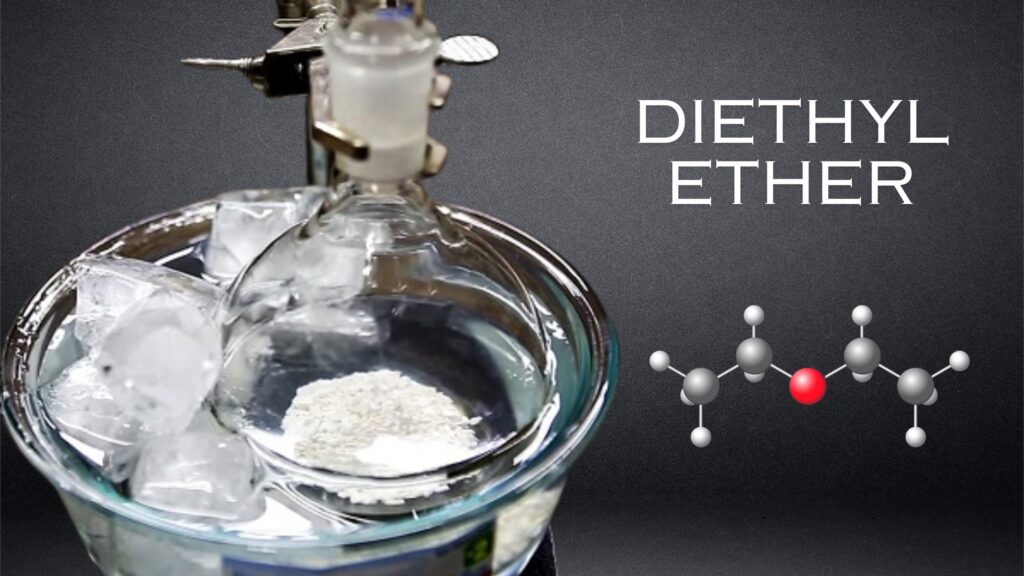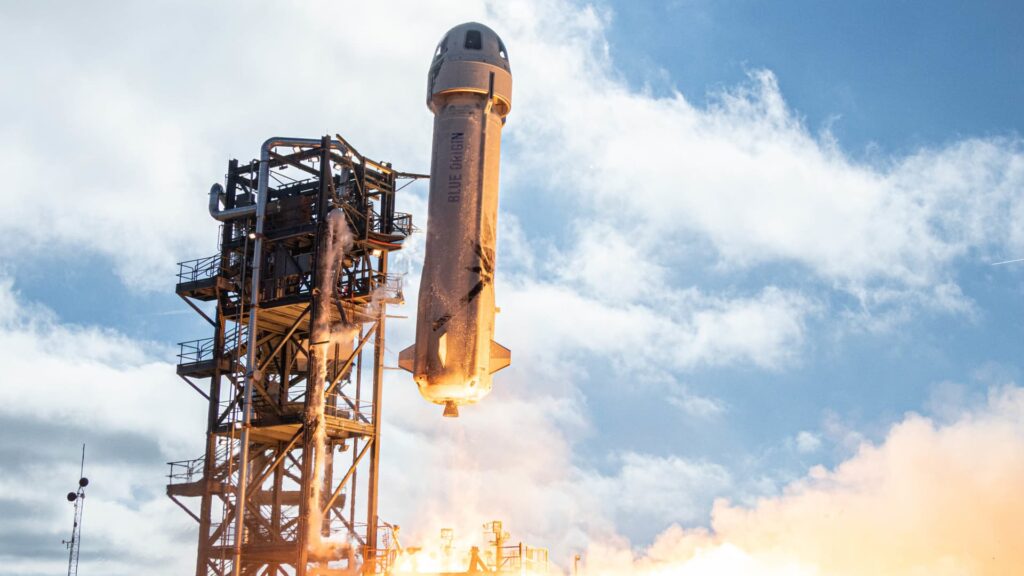Not Just a Chemical: Know Everything about Dry Ether
What is the formulation and benefits of Diethyl Ether? If you analyze the historical developments in science, you’ll realize that some of the best discoveries have happened by accident. The discovery of Penicillin, X-rays, and Mauveine, the world’s first synthetic dye are three well-known examples. The scientists who made these discoveries were all working on something else and Alexander Fleming was on vacation when his groundbreaking find, Penicillin, was under formation. Just like these important scientific findings, there’s another discovery that has had an equal impact on humanity, but it’s not talked about as much – that of diethyl ether or dry ether.
This article is an attempt to inform the readers about this miracle compound that has served its purpose so well in general anesthesia and other industries as well. Its use is still prevalent in many countries even though newer modifications have been made. Here we’ll take a look at every aspect of dry or anhydrous ether – the dry ether structure, formula, production, and uses.
What is diethyl ether or dry ether?
Diethyl ether belongs to the ether family, a group of organic solvents widely used in industries. From medical applications to fuel they are used everywhere. It is called dry ether because the water molecules are dried up during its formation. What is the formulation and benefits of Diethyl Ether? The dry ether formula can be written in the following ways:
- (C2H5)2O
- (CH3CH2)2O
- C4H10O
The dry ether structure is similar to that of alcohol and water. The two ethyl groups are bound to the oxygen atom in a bent structure, just like the two hydrogen atoms are attached to the oxygen atom in a molecule of water.
Diethyl ether is categorized by the following properties:
- It is a colorless liquid
- It is a highly volatile organic compound
- It has a sweet smell
- It is highly flammable i.e. it catches fire quickly
- Its solubility in water is limited
How is dry ether produced?
What is the formulation and benefits of Diethyl Ether? Ether was discovered in the early 19th century. It was a time when the concept of valiancy was unknown. During that time, it was thought ether could be produced only under acidic conditions, using sulfuric acid. Williamson at that time was trying to create a new homolog of ethanol, n-butyl alcohol. He was trying to prepare this alcohol compound using ethyl iodide. He could only isolate diethyl ether with this reaction when he wanted to isolate butyl alcohol!
Here’s the reaction that led to the accidental discovery of dry ether:
C2H5KO + C2H5I = C2H5-O-C2H5O
The ether formed here is under alkaline conditions as ethyl iodide is an alkaline compound. This experiment proved Gerhardt’s theory of double displacement reaction, through which Williamson was able to explain the formation of diethyl ether under acidic conditions, i.e. the use of sulfuric acid in the traditional production of ether.
The initial method used by Williamson is still popular and is continued on a lab scale. On an industrial production scale, newer reaction methods have been developed. Nowadays, it is made by the vapor-phase dehydration of ethanol in the presence of alumina catalysts that give yield as high as 95% (Ethers by Karas and Pile).
Where is dry ether used?
The ability of dry ether to dissolve substances, enhance vaporization/combustion, and serve as a versatile precursor makes it such a useful organic chemical. It is also used as a recreational substance by some. What is the formulation and benefits of Diethyl Ether? Let’s understand these uses in further detail:
- As an anesthetic – Historically, diethyl ether was the first inhaled anesthetic used during surgery. It acts to depress the central nervous system and allow patients to remain unconscious during medical procedures. However, newer and safer inhalation anesthetics have largely replaced diethyl ether for this purpose.
- As an industrial solvent – Diethyl ether is a good solvent for both organic compounds and inorganic chemicals. It is used as an extraction solvent to isolate natural products from plants. It is also used in laboratories to carry out chemical reactions and purify reaction products because of its low boiling point and ability to dissolve many substances.
- Engine Starting Fluid – Diethyl ether is a key ingredient in engine starting fluids used to help ignite engines in cold diesel and gasoline engines. The ether helps the engine ignite and start by increasing flammability and reducing the flash point of the fuel. This makes the fuel easier to combust in cold temperatures when vaporization may be inadequate for ignition.
- Precursor Chemical – While less common today, diethyl ether previously served as a precursor to produce other chemicals such as ethanol, ethyl amines, and ethyl bromide in industry. The ether group could be processed through various chemical reactions to create these other useful compounds.
How safe is dry ether?
The dry ether formula lends itself vulnerable to certain reactions that raise concerns about its safety. What is the formulation and benefits of Diethyl Ether? Let’s understand the safety aspect of this compound here and why it is quite unsafe:
- Flammability – As mentioned above, diethyl ether is an extremely flammable liquid and vapor. Its vapors can readily form explosive mixtures when exposed to air. Its low flash point and boiling point increase fire and explosion risks significantly. Strict precautions must be followed when handling it.
- Toxicity – Diethyl ether depresses the central nervous system and is toxic if ingested, inhaled, or through skin contact at high concentrations. Inhaling vaporous diethyl ether can dangerously anesthetize the body and be fatal if proper airway precautions are not in place.
- Chemical Stability – Diethyl ether can form peroxides over time if air, light, or excessive heat are present. These peroxides concentrate during evaporation or distillation and may violently explode. Special handling is required to prevent peroxide accumulation during storage.
- Environmental Effects – Releases of diethyl ether into the environment can negatively impact ecosystems and human health through pollution. Its volatility leads to air and water contamination concerns as well.
What is the formulation and benefits of Diethyl Ether? While diethyl ether makes an effective solvent, starting fluid, or anesthetic because of these same physical properties, it needs special equipment and highly controlled professional settings to handle it safely. Handling it outside labs and regulated medical or industrial facilities is not recommended due to the substantial threats to human safety and the environment.
Which organic compounds have replaced dry ether now?
Due to the inherent safety issues with dry ether, research was done to make improvements to the compound. This was felt particularly in medicine as many patients experienced nausea after the operation. By and large, it is now considered an antiquated compound due to its harmful properties. It has been replaced by the following compounds:
- Halothane
- Isoflurane
- Sevoflurane
These are new-age general anesthetic drugs that depress the nervous system, administered to lower blood pressure, and pulse rate, and reduce pain sensitivity.
Key Takeaway
What is the formulation and benefits of Diethyl Ether? In the 19th century, when Alexander Williamson was trying to make a new alcohol, he accidentally did the opposite. The compound he discovered had nothing to do with alcohol, it was an ether instead! It is said that the best experiment is one that leads to an unexpected result and this is exactly what Williamson achieved. He created a compound called dry ether which was a game changer in medical surgery. It gave us a relatively safe anesthetic as compared to chloroform that was used during the time. Even though chemists have discovered even safer compounds like halothane to replace diethyl ether, it can’t be denied that it was a stepping stone toward a major scientific breakthrough.



